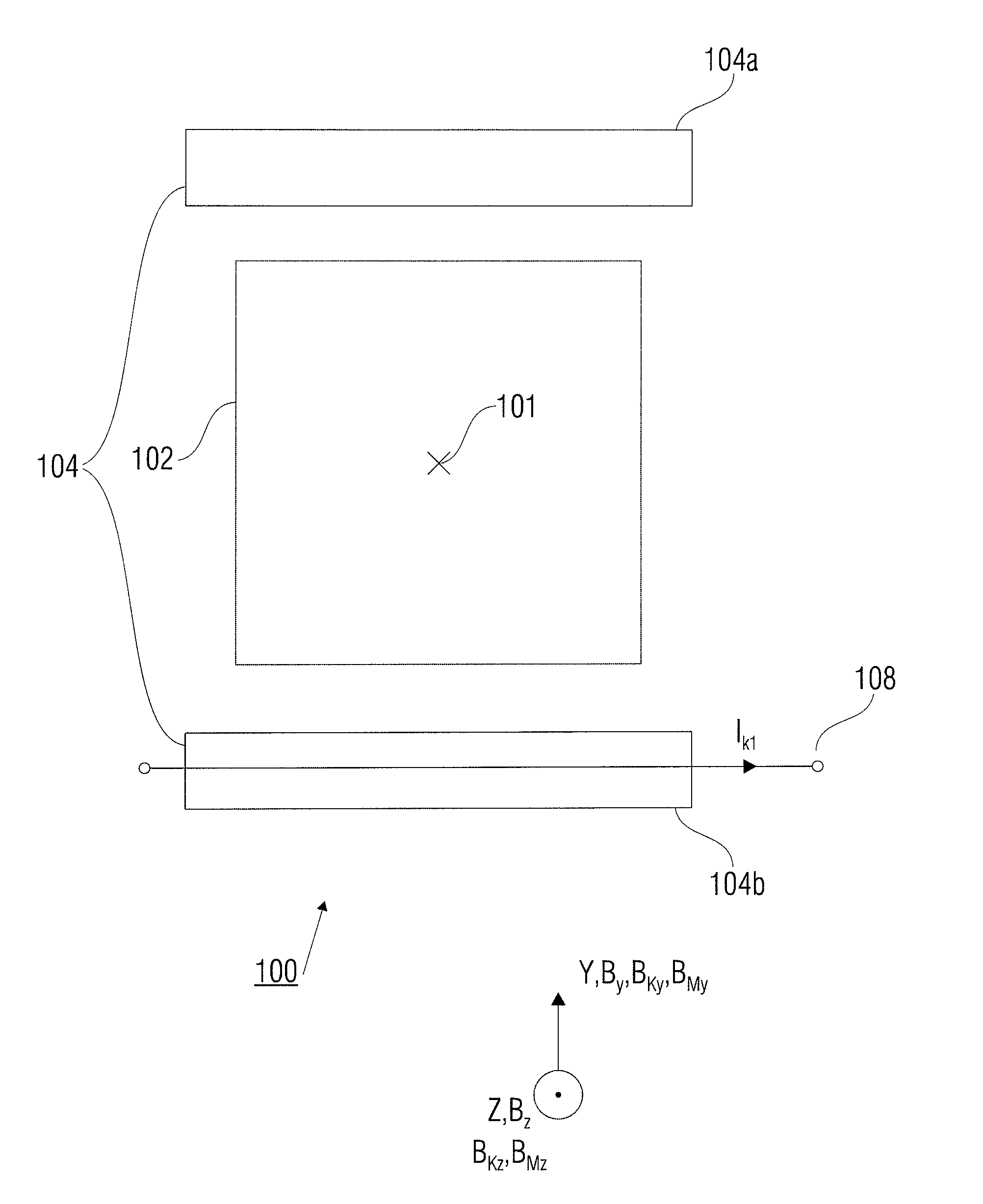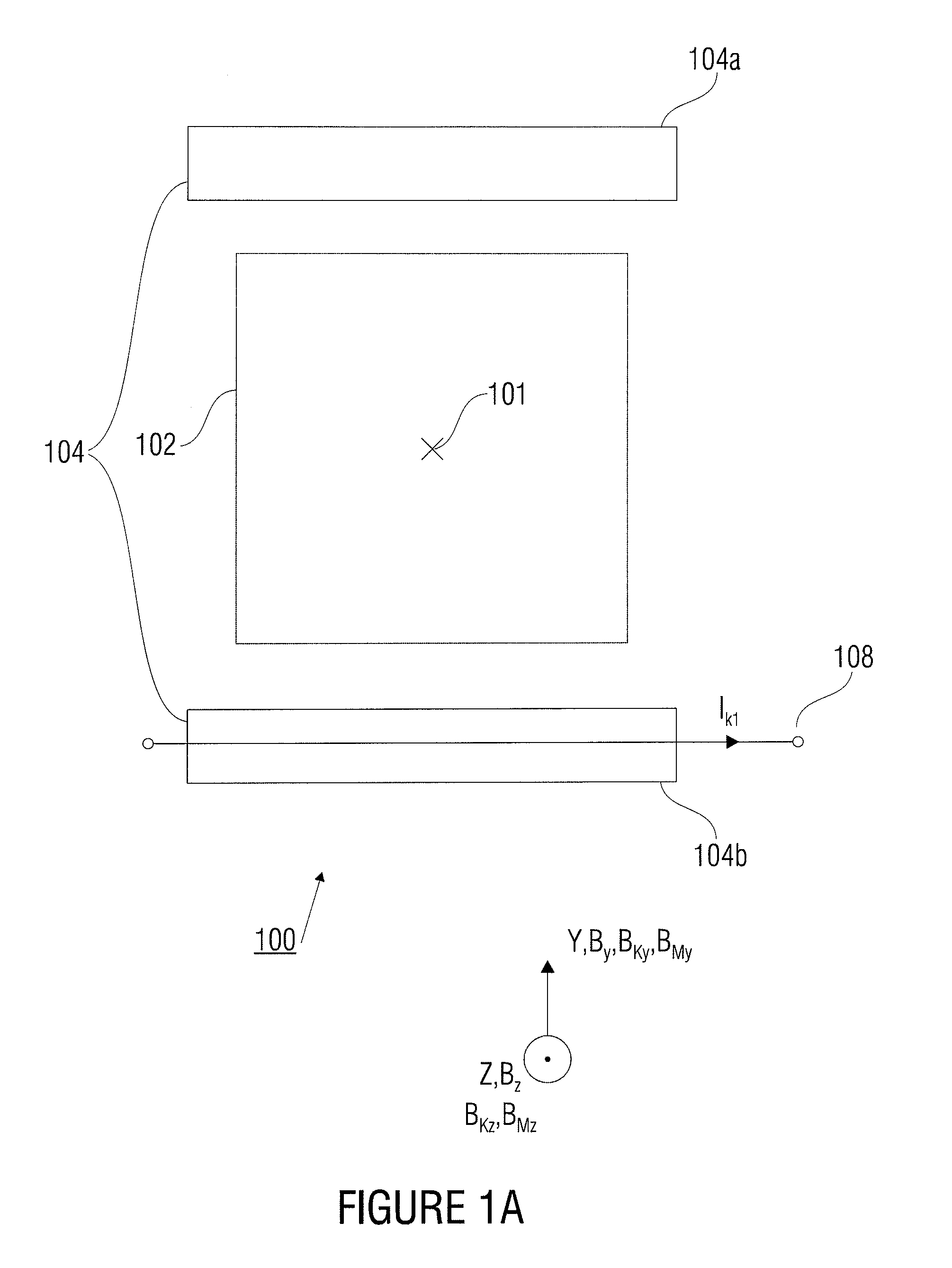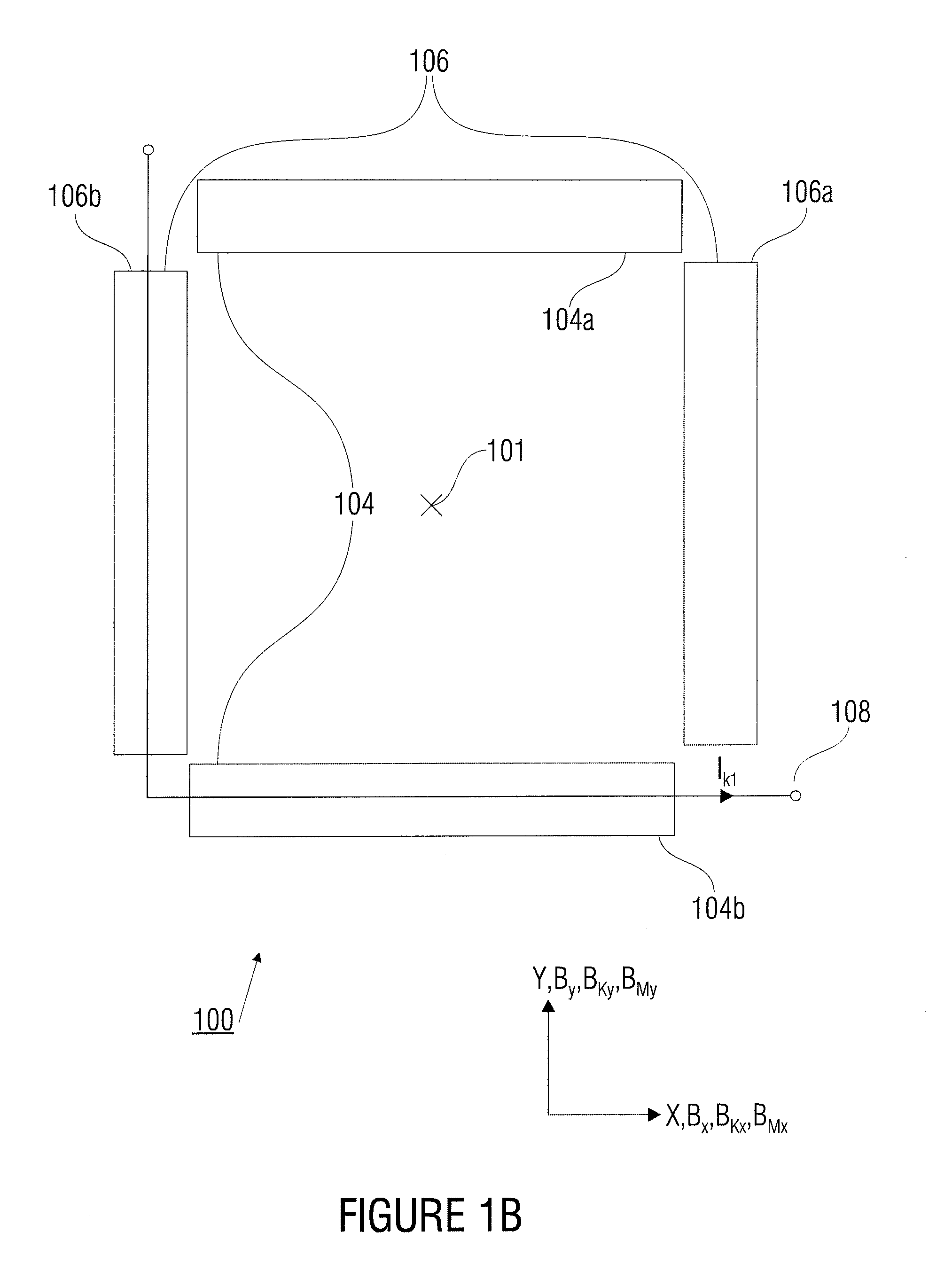Calibratable multidimensional magnetic point sensor
a multi-dimensional, magnetic point sensor technology, applied in the field of hall sensors, can solve the problems of inability to calibrate by a defined magnetic field generated externally, inability to accurately evaluate the magnetic field based on the magnetic field components, and inability to detect magnetic field sensors at different locations, so as to save additional hardware cost or time effor
- Summary
- Abstract
- Description
- Claims
- Application Information
AI Technical Summary
Benefits of technology
Problems solved by technology
Method used
Image
Examples
Embodiment Construction
[0048]With reference to the following specifications it should be noted, that in the different embodiments same or seemingly same functional elements have the same reference numerals and are thus mutually interchangeable in the different embodiments illustrated in the following.
[0049]FIG. 1a shows a calibratable magnet field sensor 100 for detecting a first and a second spatial component (By, Bz) of a magnet field in a reference point 101, wherein the magnetic field comprises and first and a second measurement field component (BMy, BMz) and / or a first and second calibration field component (BKy, BKz). The magnetic field sensor 100 includes a first sensor element arrangement 104 comprising at least a first and a second sensor element (1041a, 104b) for detecting the first magnetic field component By comprising a first measurement field component BMy and / or a first calibration field component BKy, with reference to a first spatial axis y in the reference point 101.
[0050]Further, the ma...
PUM
 Login to View More
Login to View More Abstract
Description
Claims
Application Information
 Login to View More
Login to View More - R&D
- Intellectual Property
- Life Sciences
- Materials
- Tech Scout
- Unparalleled Data Quality
- Higher Quality Content
- 60% Fewer Hallucinations
Browse by: Latest US Patents, China's latest patents, Technical Efficacy Thesaurus, Application Domain, Technology Topic, Popular Technical Reports.
© 2025 PatSnap. All rights reserved.Legal|Privacy policy|Modern Slavery Act Transparency Statement|Sitemap|About US| Contact US: help@patsnap.com



